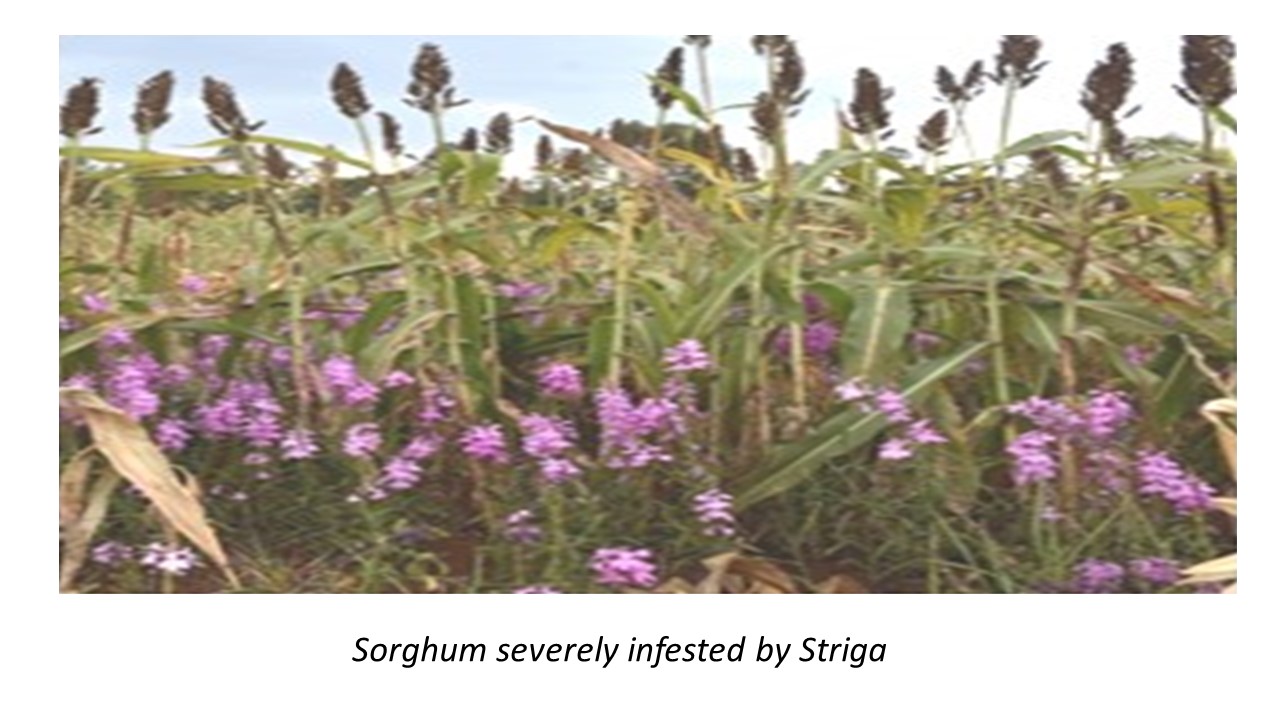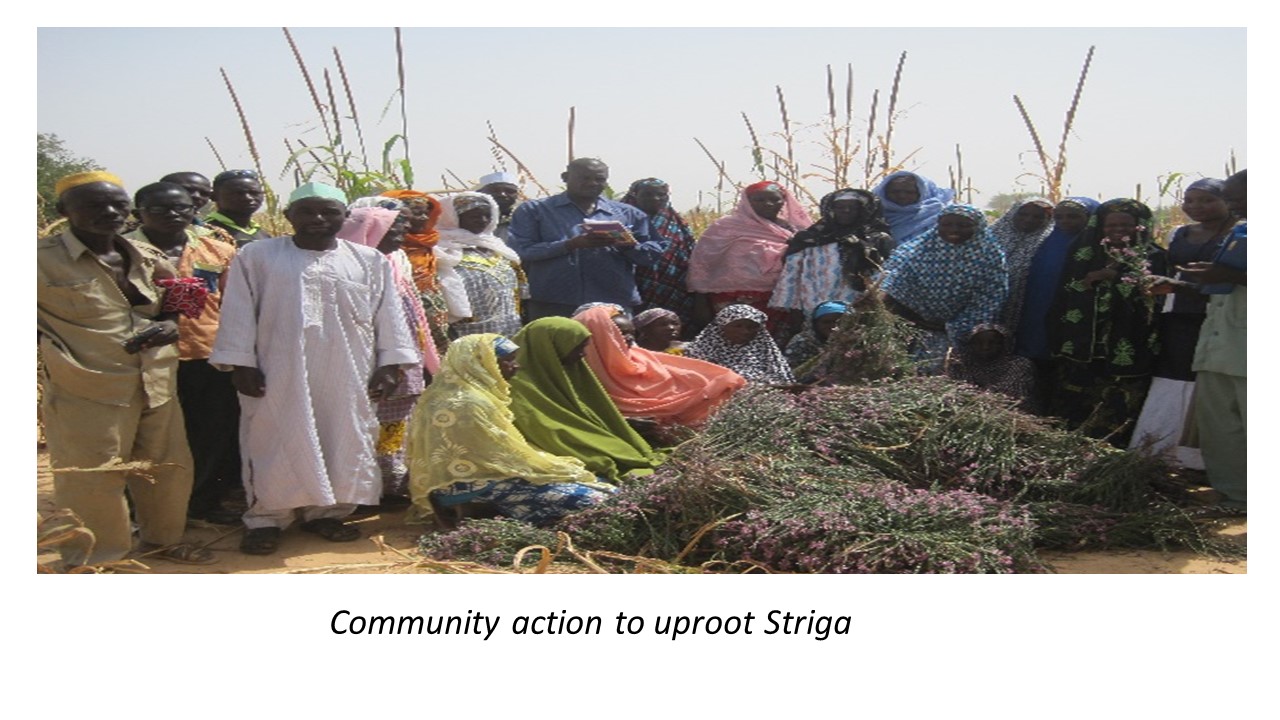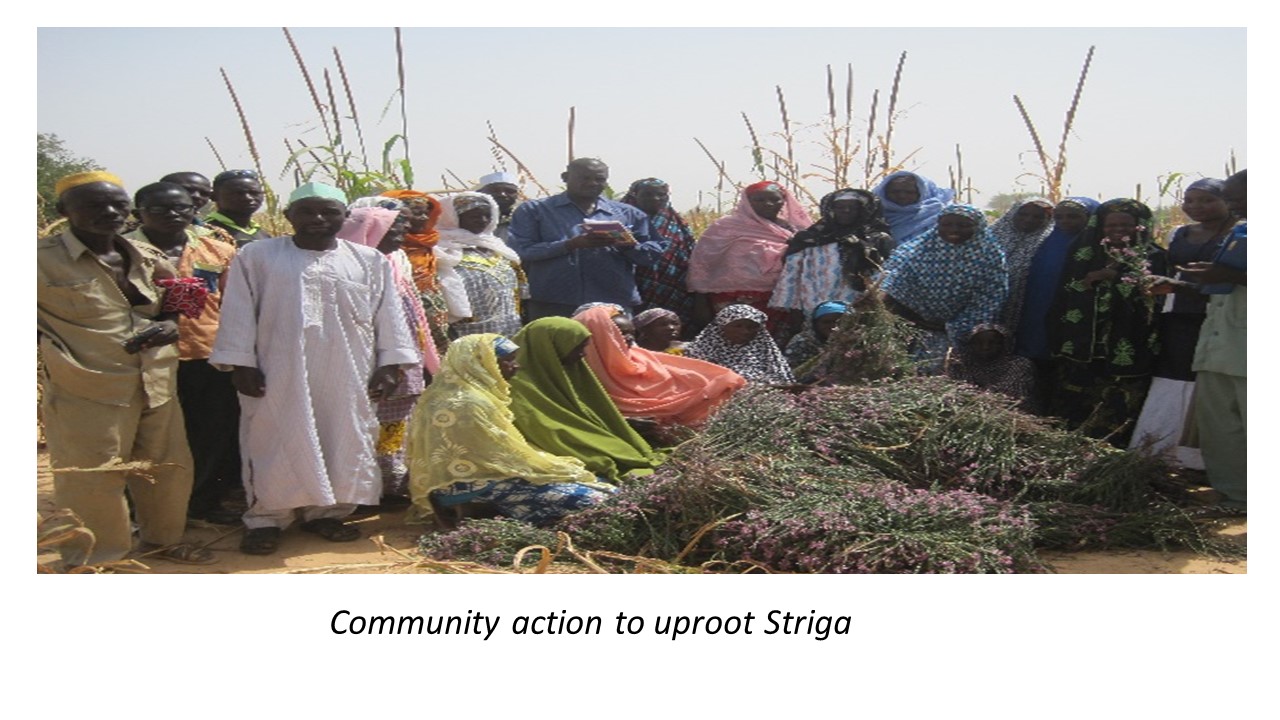Proactive Management of Striga Infestation
Summary
Striga, also known as witchweed, is a parasitic plant that has invaded all major sorghum and millet production zones of Africa. The damage begins underground where the weed latches onto the roots of the crop and feeds on water, nutrients, and sugars causing twisted, discolored, and stunted growth. There is a strong link between soil fertility depletion and yield losses of sorghum and millet by the parasitic weed because as less nutrients are available in a farmer field; the more crops are attacked and the more the pest siphons off sugars and other substances from the host. A downward spiral arises when fields are continuously cropped with sorghum, millet and other cereals, insufficient mineral fertilizer and organic inputs are applied. Depending on the severity of pest infestation, yield losses range from 20% to complete crop failure. Seeds of the parasitic weed remain in the soil for up to 20 years and thus simple weeding and routine field sanitation procedures are not enough to eradicate it. Farmers who are badly hit by the pest end up suffering food insecurity. Proactive technologies and strategies exist that reduce Striga infestation and its yield losses and halt the spread of the pest.
About the Solution
Problems of Striga infestation and soil fertility decline must be addressed by various agronomic practices, which include fertilizer micro-dosing, organic matter recycling, crop rotation and intercropping, Striga tolerant varieties, seed dressing, pre-emergence herbicides, and hand weeding and burying of emerged shoots. Overcoming the parasitic weed with these technologies only succeeds if efforts by stakeholders are well informed because too many believe that control measures are futile. Farmers must know how to effectively implement practices and need to mobilize resources and labor for investing in control measures. Extension services play a very important role to disseminate information, implementing field demonstrations and coordinating grassroots activities. Besides this, development agencies must organize large-scale campaigns designed to overcome Striga in worst affected areas. Commercial seed companies and agro-dealers must include new technologies for Striga management in their product ranges and market them. Farmer associations must engage in bulk purchase of inputs and community-based seed production. National authorities must enact priority policies for integrated management practices to combat the weed.
Available technologies and practices for controlling Striga can be applied in all major millet and sorghum production zones. The approaches can be used to combat different Striga species that parasitize these crops; Striga hermonthica, S. asiatica, S. forbesii, and those that affect cowpea (S. gesnerioides).
Practices for Striga management are easily adapted to soil fertility conditions, Striga infestation levels, availability of agro-inputs, farming habits, and socio-economic contexts, which vary substantially in sorghum and millet growing areas.
Widespread uptake of approaches for controlling Striga and improving soil fertility is achieved through technical training and advisory services. Participatory approaches such as Farmer Field Schools are efficient in disseminating technologies and practices for combatting Striga. There is a need for Training of Trainers in Farmer Field Schools. Capacity building focuses on site characterization, cultivation of resistant varieties, fertilizer micro-dose application, production of organic fertilizers and timing of Striga uprooting. Research centers have identified and released a range of sorghum and pearl millet varieties with defense mechanisms against Striga that keep it from attacking roots, and which are able to grow on nutrient depleted farmland. Common mineral fertilizers can be used to alleviate soil nutrient depletion and reduce Striga emergence. Animal manure, compost and fresh crop residue are suitable organic matter inputs for improving nutrient and water availability, but also stimulate abortive germination by Striga seed stocks. Crop rotation or intercropping to combat Striga involves different non-cereal crops like cowpea, groundnut, soybean, cotton, sesame, or sorrel. Desmodium, a pasture legume, was packaged into an agro-ecological approach to Striga management referred to as Push-Pull.
Commercialization
Commercially available
Solution Images
Institutions




